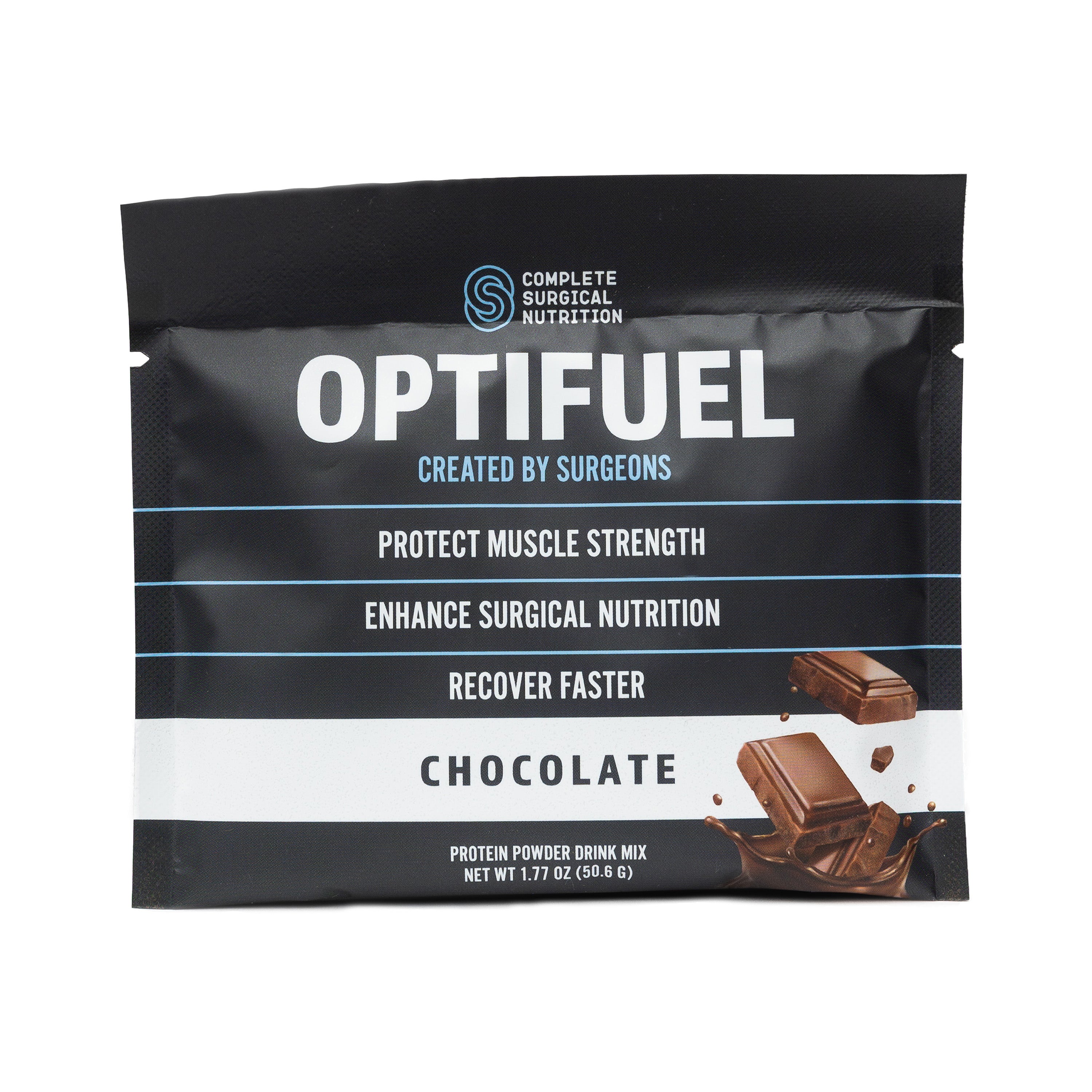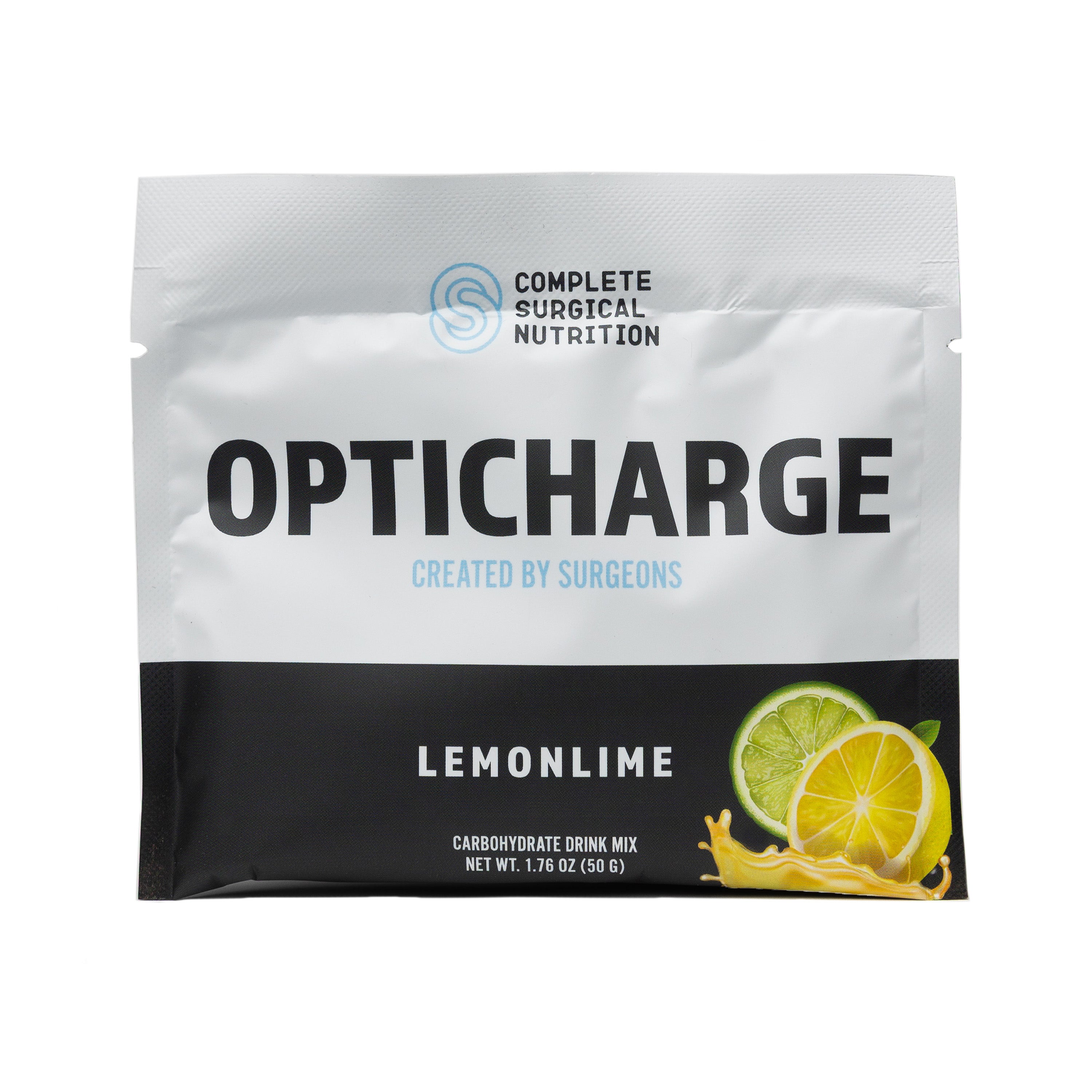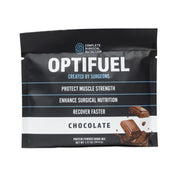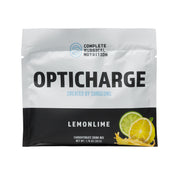THE SURGICAL NUTRITION KIT & STELO DEVICE
- Reduce complication risk with glucose monitoring
- 25 grams of Whey Protein
- High in Leucine (3g) and Glutamine to decrease muscle loss after surgery
- Loaded with Vitamins important for surgical recovery
- Made at a NSF certified facility
- HSA/FSA eligible
- Gluten Free
- Non-denatured protein
- Produced in USA
- Optifuel - 28 packets of protein mix optimized for recovery (1 month supply)
- Opticharge - 3 packets of pre-surgery carbohydrate
- Stelo glucose monitor kit - 2 glucose sensors (1 month supply)
- Branded shaker bottle
- OptiFuel contains enhanced protein and specific vitamins that are scientifically proven to promote healing and improve recovery after surgery
- Once per day packet
- Mix one packet with 12-16 oz of water, milk, or non-dairy milk
- Shake in provided blender bottle for 30 seconds until dissolved
- Ideally begin taking 1-2 weeks prior to surgery to prepare for surgery
- Continue for at least 2-3 weeks after, and up to 6 months after surgery
- 28 Optifuel packets are included per monthly package
- OptiCharge is a complex carbohydrate drink that is consumed just prior to surgery to combat the biochemical stress associated with surgery.
- Drink just prior to bed the night before surgery
- 3 Opticharge packets are included in each order
Glucose (Blood Sugar) Control And Surgery
-
Several studies have shown that glucose levels are related to risk of complication after surgery. Many patients and surgeons only think about whether or not a patient has diabetes as a risk factor for complication. However, research indicates that elevated glucose levels after surgery, regardless of whether or not one has diabetes, is linked to
complications. In one study the risk of complication was 30 to 60% higher among non-diabetics if their blood sugar was elevated after surgery. Link to studyElevated glucose levels have specifically been linked to higher risk of infection after joint replacement.
Another study reported increased risk of death following general surgery procedures.
Link to study -
This is actually quite common. In one study, even those without diabetes had elevated glucose levels after surgery in 51% of cases. In other words, over half of patients have a high glucose level after surgery. In that same study, it was again shown that elevated glucose levels increased the risk of complication. Link to study
-
Surgery places stress on your body. As a result, it is common for glucose levels to rise after surgery. The goal is to minimize these events. The more frequent or longer the duration of events, the higher the risk.
One study found that high glucose levels prior to surgery raise the risk of high levels after surgery. Link to study. How do you lower your levels prior to surgery? We recommend two things:
First, OptiCharge is designed to help lower the risk of insulin-resistance after surgery. It has been shown that consuming a drink like OptiCharge actually lowers the risk of high glucose levels after surgery. This is because the carbohydrate load prior to surgery (without sugar) actually provides fuel for the body which lowers the risk of insulin resistance after surgery.
Second, diet and exercise are important. A high protein diet will lower the risk of high glucose levels. Order of food consumption is also important. Eating vegetables and protein prior to carbohydrate (breads, grains, etc) is beneficial because they slow the absorption of carbohydrates that lead to increase in blood glucose levels. Even walking prior to and after surgery helps lower glucose levels by driving glucose into your muscles.
-
Continuous glucose monitoring was initially developed for diabetics to closely monitor blood glucose levels with a wearable device. A patch with a small needle is placed on the body and provides continuous feedback with a phone-based app.
We have partnered with Dexacom which offers the Stelo device for continuous glucose monitoring without a prescription. While evidence is still emerging in this area, the concept is that if you are aware of your glucose levels, you can make adjustments to minimize the frequency and duration of high glucose (hyperglycemic) events. The Stelo device comes as a 30 day supply with 2 devices or units each lasting 15 days. If one
wants to use this device we recommend applying one unit prior to surgery and one unit after surgery. As an example, wear one unit 10-15 days prior to the procedure and then wear the second unit after surgery. The reason for this recommendation is that most people have not had feedback on their glucose levels. Wearing the device prior to
surgery can provide feedback that allows one to make valuable activity and diet modifications that can help lower levels prior to surgery as well as after surgery. -
As mentioned, diet, including order of food is important. Ideally, elevations are prevented.
However, if your levels are elevated after eating there are some “hacks” you can use as well:
1) Drink lots of water
2) Go for a walk or exercise within 1 hour of eatingIf you have consistently elevated levels despite eating well and exercising, you may have undiagnosed diabetes or “pre-diabetes” and should consider discussing with your primary care physician.























